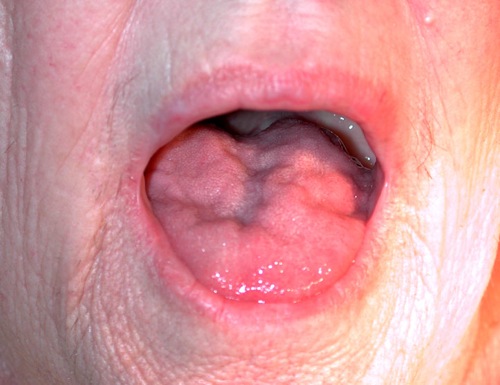
Amyotrophic Lateral Sclerosis (ALS)
written by Amanda Li, Dal med student class of 2010
reviewed by Ian Grant, MD, neurologist, March 2009
Introduction
Amyotrophic Lateral Sclerosis (ALS), also known as Lou Gherig's disease, is a neurological disease characterized by progressive degeneration of both upper and lower motor neurons. It affects 5/100,000, with average age of onset in the late 50's and early 60's. Men are affected slightly more often than females. While ALS is frequently a devestating disease, with a median survival of 3 years following diagnosis, many people with this disease show incredible courage. Here is one patient's thoughts:
"I am not my body. I am my presence or spirit. I am paralyzed from the neck down, need help with the most basic bodily functions, and can't speak. In spite of this, I have not lost one ounce of my dignity. No one can take that away from you. You have to surrender it. I have pride in who I have become, and exist with an ere of confidence."
Causes and Risk Factors
90% of cases of ALS are idiopathic. Viral infection, autoimmune response, toxicity, and excitotoxicity/free radical damage, leading to accumulation of intracellular calcium have all be suggested to be associated with ALS. However, there is no conclusive evidence for any one of these factors in the studies completed to date.
Ten per cent of cases are familial, and of these, <20% carry a mutation in the superoxide dismutase 1 (SOD1) gene. Other, even less common gene mutations, have been identified in certain families.
Pathophysiology
ALS affects both upper motor neurons (UMN) and lower motor neurons (LMN).
Signs and Symptoms
Diagnosis of ALS requires three types of findings:
- Evidence of LMN degeneration by clinical, electrophysiological, or neuropathological exam
- Evidence of UMN degeneration by clinical exam
- Progressive spread of signs/symptoms within or between regions by history or clinical exam
There must not be evidence of other pathological process (by electrophysiology, pathology, or imaging) that could explain these symptoms.
- history
- physical exam
History
Progressive weakness is the cardinal symptom of ALS. Weakness often starts in the hands, upper or lower limbs, and in the face, but can also begin at other sites. Limbs can initially be affected segmentally and asymmetrically. Patients often notice difficulty fastening buttons or opening jars.
Cranial nerve involvement can be substantial, especially in people with progressive bulbar disease. Symptoms can include dysphagia, dysarthria, and drooling.
Bulbar findings: mixed dysarthria (spastic + flaccid) characteristic in ALS:
- slowed, strained speech (spastic dysarthria)
- slurred, nasal speech (flaccid dysarthria)
Dysphagia can manifest as coughing or spluttering while eating, or with choking. Tongue atrophy and fasciculations may also be present.
Emotional Incontinence, Anxiety: Emotional lability such as abrupt onset of inappropriate laughter or crying triggered by minor or insignificant events. Patients are usually well aware, but cannot help it.
Anxiety often triggers and/or accompanies other ALS symptoms such as choking spells and dyspnea
Weakness of the respiratory muscles: leads to hypoxia, orthopnea, and high risk of aspiration pneumonia.
Physical Exam
Muscle weakness should be thoroughly assessed.
Signs of UMN degeneration
- Spasticity
- Hyperreflexia
- Babinski’s sign positive
Signs of LMN degeneration
- Atrophy
- Flaccid tone
- Hyporeflexia
- Fasciculations
The following are NORMAL in ALS:
- Eye movements
- Bladder and bowel function
- Sensation
- Cognitive function
- No cerebellar or extrapyramidal disease
Up to 1/2 of patients will develop some type of frontotemporal dysfunction. This can include executive and language dysfunction, as well as personality changes.
The tongue below shows evidence of atrophy:
(photo provided by Dr Ian Grant, Dalhousie University Faculty of Medicine, Division of Neurology)

Investigations
- lab investigations
- diagnostic imaging
Lab Investigations
Bloodwork
- essentially normal
- creatine kinase (CK) may be mildly elevated
Muscle Biopsy (helpful but unnecessary for diagnosis) & Pathology:
- small angulated fibres (denervation)
- fibre type grouping
- degeneration and loss of motor neurons with astrocytic gliosis
- Bunina bodies (eosinophilic hyaline intracytoplasmic inclusions) in 70% of patients
Differential Diagnosis
- Progressive Muscle Atrophy / Progressive Bulbar Palsy
- Spinal Muscle Atrophy
- Primary Lateral Sclerosis / Progressive Pseudobulbar Palsy
- Post-polio syndrome
- Spinal cord disease: spondylosis
- muscle disease: myositis
- NMJ disorder: rare but myesthenia gravis
- neuropathy
Treatments
Disease Specific Therapy
Currently, there is only one drug that is indicated for treatment of ALS. Riluzole acts by blocking glutamate/excitotoxicity. Studies to date have shown a modest increase in median lifespan (3-6 months).
Symptom Management
- Muscle cramping and spasticity– hydration, calcium/magnesium, baclofen, quinine, phenytoin
- Sialorrhea (drooling) – anticholinergics, botox injections of parotid and submandibular glands
- Emotional Incontinence – tricyclic antidepressants. New evidence for dextromethorphan & quinidine
- anxiety and depression: treat accordingly
- Dyspnea/Respiratory weakness – ventilatory support (non-invasive ventilation such as BIPAP, invasive ventilation, tracheostomy). Respiratory education (ie breath stacking) can be helpful
- Swallowing and nutrition: important to keep nutritional intake adequate to maintain strength. Soft diets, high calorie nutrition thickened liquids, PEG (percutaneous endoscopic gastrostomy) tube insertion and feeding
- Dysarthria: breath support, palatal lifts, voice amplification, augmentative communication
Pontial Future Therapies
- lithium
- ceftriaxone
- stem cells
The Patient
Consequences and Course
Average life expecancy is 3 years, although some people have less-aggressive disease.
Predictors of poor prognosis:
- age
- bulbar onset
- vital capacity
- short time to diagnosis
- electrodiagnostic features
Respiratory muscle weakness is the most common cause of death. Aspiration pneumonia is very common.
Health Care Team
ALS care involves professionals from a number of disciplines including, among others:
- Neurology
- Physical Medicine & Rehabilitation
- Respirology
- Palliative Care
- Gastroenterology
- Nursing, acute and long term care
- Dieticians
- Physiotherapy
- Respiratory Therapy
- Occupational Therapy
- Social Work
- Psychology
- Spiritual Care
- Legal services
- Medical ethics
Resources and References
There are many organizations dedicated to furthering the comfort and care of people with ALS and their families. Some of these include:
Topic Development
authors:
reviewers:
